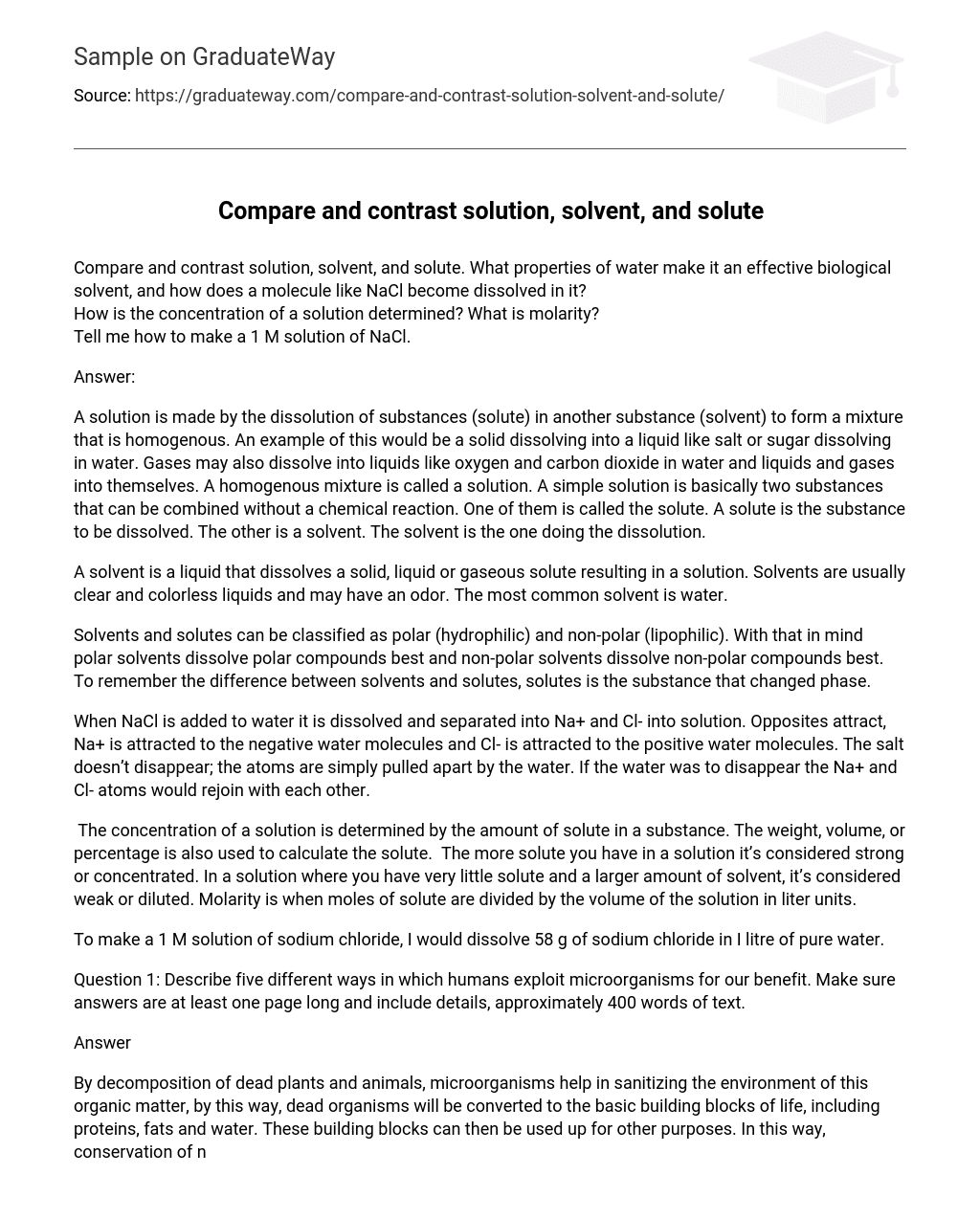Compare and contrast solution, solvent, and solute. What properties of water make it an effective biological solvent, and how does a molecule like NaCl become dissolved in it? How is the concentration of a solution determined? What is molarity? Tell me how to make a 1 M solution of NaCl.
Answer:
A solution is made by the dissolution of substances (solute) in another substance (solvent) to form a mixture that is homogenous. An example of this would be a solid dissolving into a liquid like salt or sugar dissolving in water. Gases may also dissolve into liquids like oxygen and carbon dioxide in water and liquids and gases into themselves. A homogenous mixture is called a solution. A simple solution is basically two substances that can be combined without a chemical reaction. One of them is called the solute. A solute is the substance to be dissolved. The other is a solvent. The solvent is the one doing the dissolution.
A solvent is a liquid that dissolves a solid, liquid or gaseous solute resulting in a solution. Solvents are usually clear and colorless liquids and may have an odor. The most common solvent is water.
Solvents and solutes can be classified as polar (hydrophilic) and non-polar (lipophilic). With that in mind polar solvents dissolve polar compounds best and non-polar solvents dissolve non-polar compounds best. To remember the difference between solvents and solutes, solutes is the substance that changed phase.
When NaCl is added to water it is dissolved and separated into Na+ and Cl- into solution. Opposites attract, Na+ is attracted to the negative water molecules and Cl- is attracted to the positive water molecules. The salt doesn’t disappear; the atoms are simply pulled apart by the water. If the water was to disappear the Na+ and Cl- atoms would rejoin with each other.
The concentration of a solution is determined by the amount of solute in a substance. The weight, volume, or percentage is also used to calculate the solute. The more solute you have in a solution it’s considered strong or concentrated. In a solution where you have very little solute and a larger amount of solvent, it’s considered weak or diluted. Molarity is when moles of solute are divided by the volume of the solution in liter units.
To make a 1 M solution of sodium chloride, I would dissolve 58 g of sodium chloride in I litre of pure water.





